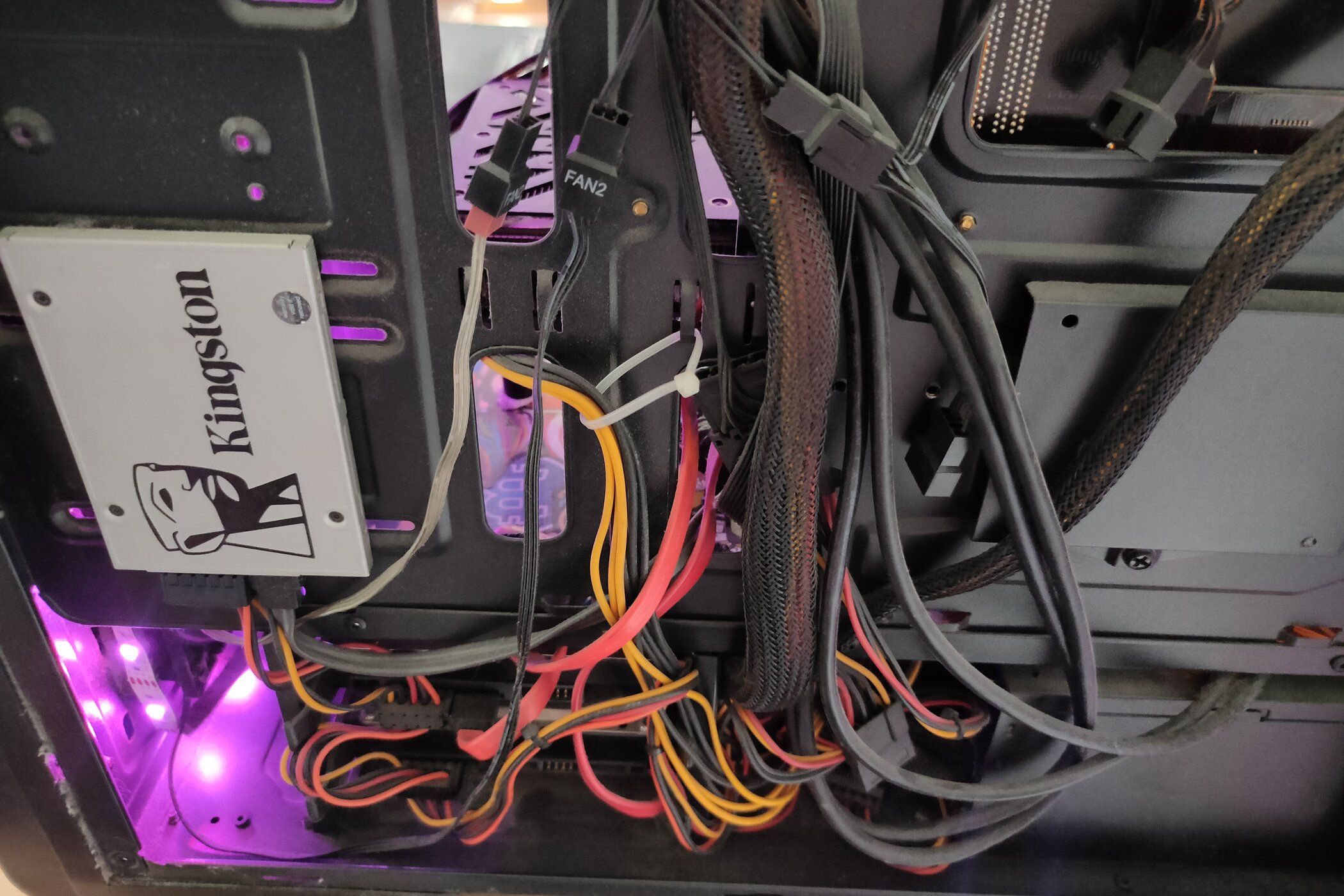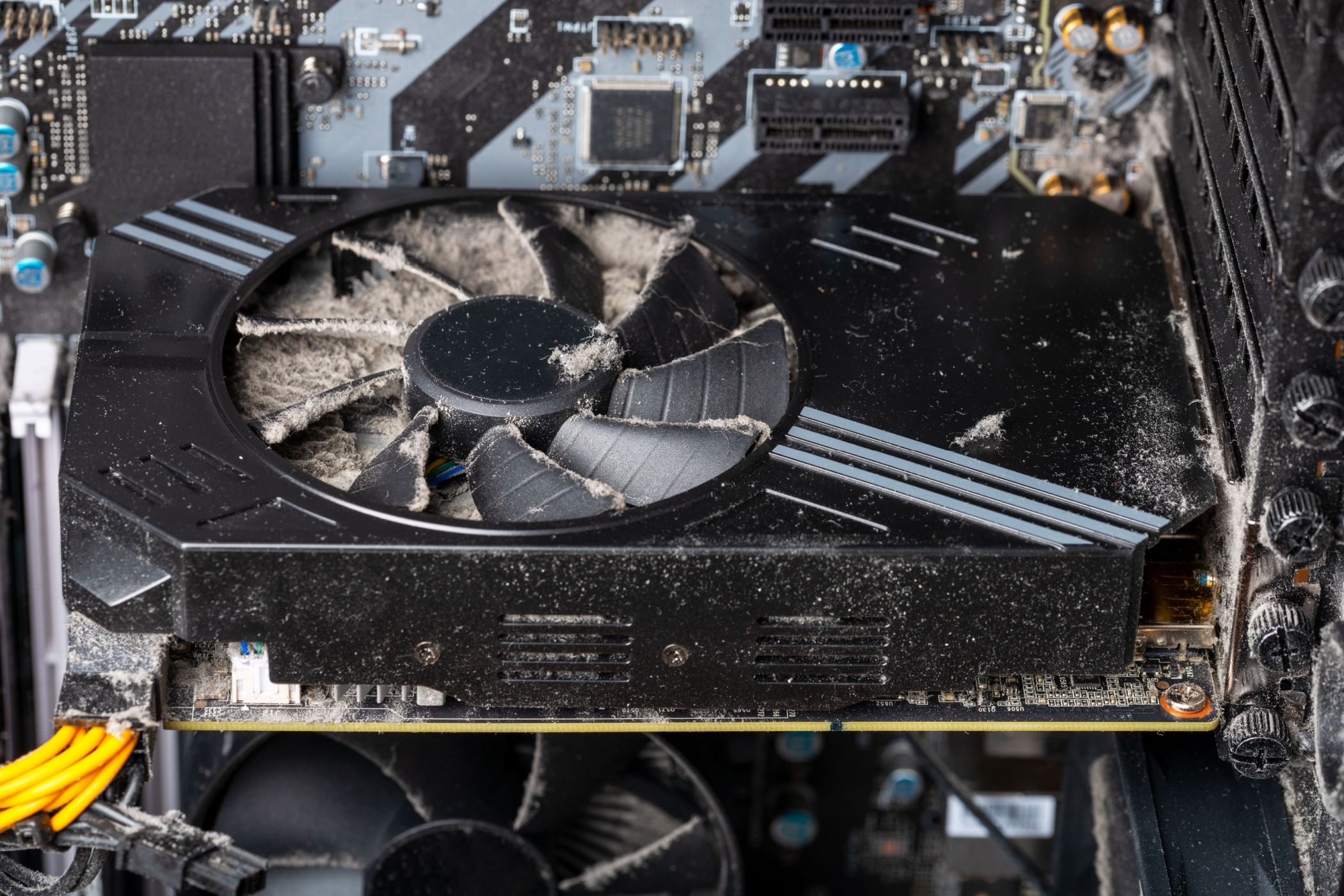
Top 6 Indicators of Poor PC Cable Organization – Avoid the Chaos!

Top 6 Indicators of Poor PC Cable Organization – Avoid the Chaos!
Quick Links
- You Struggle to Open the Side Panels
- It’s Hard to Remove Parts
- Your PC Gets Hot
- Loud or Rattling Fans
- Dust Accumulation
- Your Aesthetics Suck
Key Takeaways
- Messy PC cables can block airflow, leading to overheating issues.
- Poor cable management can make it difficult to access and upgrade PC parts.
- Tangled cables can cause loud fan noise or even result in potential hazards.
Clearing up the cables inside your PC might seem like futile busywork. After all, if everything works, why bother? Well, I have six good reasons that’ll convince you to open up your case and fix the mess inside your PC.
You Struggle to Open the Side Panels
If your cables are too close to the edges where your side panels go, you won’t be able to slide them closed without a struggle. While this isn’t something you have to do every day, it’ll waste a lot of time whenever you want to dust out your PC , change your thermal compound, or install a new PC part.
What’s worse is that if you force the panel shut with a cable stuck on the edge, you might damage the cable, which could lead to disastrous consequences, such as a short circuit. At the very least, you should try to keep your left side panel tidy because that’s where all the important components are, so you’ll open it more frequently.
It’s Hard to Remove Parts
Massive CPU coolers and graphics cards leave little room inside your case, but there’s no reason why you should add to the problem. If you can’t reach your RAM slots because you have thick cables all around and over them, you’ll have to disassemble half the PC each time you want to re-seat or upgrade your RAM. If it’s a new PC that won’t POST , you’ll regret your shoddy cable management.
Your PC Gets Hot

Grigvovan / Shutterstock.com
If your PC is always warm to the touch and shuts off randomly, or your performance drops randomly under heavy loads, there’s a good chance it’s overheating . Your PC relies on good airflow created by case fans to keep its temperature low.
Tangled cables that get in the way of fans and heatsinks can block or restrict airflow paths, which can have a drastic effect on not just the temperature inside your case but also your CPU and GPU temps. Even if your cables aren’t directly in front of your fans or important components, they can still obstruct the ventilation holes that allow for passive airflow, so it’s important to be mindful about where you tuck them away.
Loud or Rattling Fans
PC fans that have to constantly spin at high RPMs get pretty loud. This can happen if your cooling is insufficient, so the fans are trying their best to get your PC temperature down. However, there’s another sound that’s far more ominous—rattling.
If a part of your cable is within the spinning range of one of your fans, the fan blades will brush against it with every revolution. In severe cases, this can result in physical damage to the cables, potentially turning into a fire or electric shock hazard.
Fortunately, most of the time, the noise coming from the fan hitting the cable will be loud enough that you’ll hear a constant rattling sound. If you hear a rattle coming from your computer, open your case up and investigate to find where the sound is coming from, just to make sure a stray cable hasn’t become entangled in one of your fans.

Franco Francisco Maria / Shutterstock.com
Dust Accumulation
There are two ways poor cable management contributes to dust accumulation—by restricting airflow, so dust has nowhere to go, and by trapping dust. Disorganized, tangled cables create nooks and crannies where dust can accumulate. Dust is the #1 enemy of computers, as it clogs heatsinks and filters, slows down fans, and can even cause a short circuit.
Your Aesthetics Suck

Justin Duino / How-To Geek
Let’s be honest, cable management isn’t just about functionality; it’s also about style. A major reason people obsess over cable management has to do with aesthetics. That’s why people get modular power supplies and individually sleeved cables . Neatly routed and secured cables that don’t obstruct the view of cooler-looking parts like your graphics card and AIO liquid cooler. It creates a sense of pride and accomplishment for PC builders.
There’s a surprising number of issues that result from poor cable management. Fortunately, it’s a relatively easy thing to fix that won’t take more than a couple of hours of your time and a few zip ties. If you’re feeling motivated, check out our tips for optimal PC cable management .
Also read:
- [New] 2024 Approved Perfecting Live Streams Selecting Top 5 Recording Systems
- [New] In 2024, Crafting YouTube Entrance Videos with the Top Tools
- [New] Instagram's Music Ownership Standards for 2024
- How to Come up With the Best Pokemon Team On Apple iPhone 12? | Dr.fone
- In 2024, Innovative Strategies for Elevating Your OneStream Experience
- New In 2024, Unleash Your Creativity Advanced Video Editing Techniques and Effects
- Preventing Damage From Cellphone Shakes: Protecting Your Smartphone's Lens - A Guide for iPhone & Android Users
- Preventing Nuisance Automated Calls: Tips for Android Users
- Seamless Integration of Windows & Android in Lenovo's Innovative ThinkBook Plus Nhybrid.
- Seamlessly Transfer Website Links From Your Android Smartphone to Your PC Running Windows
- Smart Savings: High-Quality Phones Available for Less Than $1,000
- Top-Notch Solutions for Disabled Apple ID From Apple iPhone 6s Plus Making It Possible
- Title: Top 6 Indicators of Poor PC Cable Organization – Avoid the Chaos!
- Author: Kevin
- Created at : 2024-09-11 16:32:06
- Updated at : 2024-09-16 16:24:41
- Link: https://hardware-reviews.techidaily.com/top-6-indicators-of-poor-pc-cable-organization-avoid-the-chaos/
- License: This work is licensed under CC BY-NC-SA 4.0.
